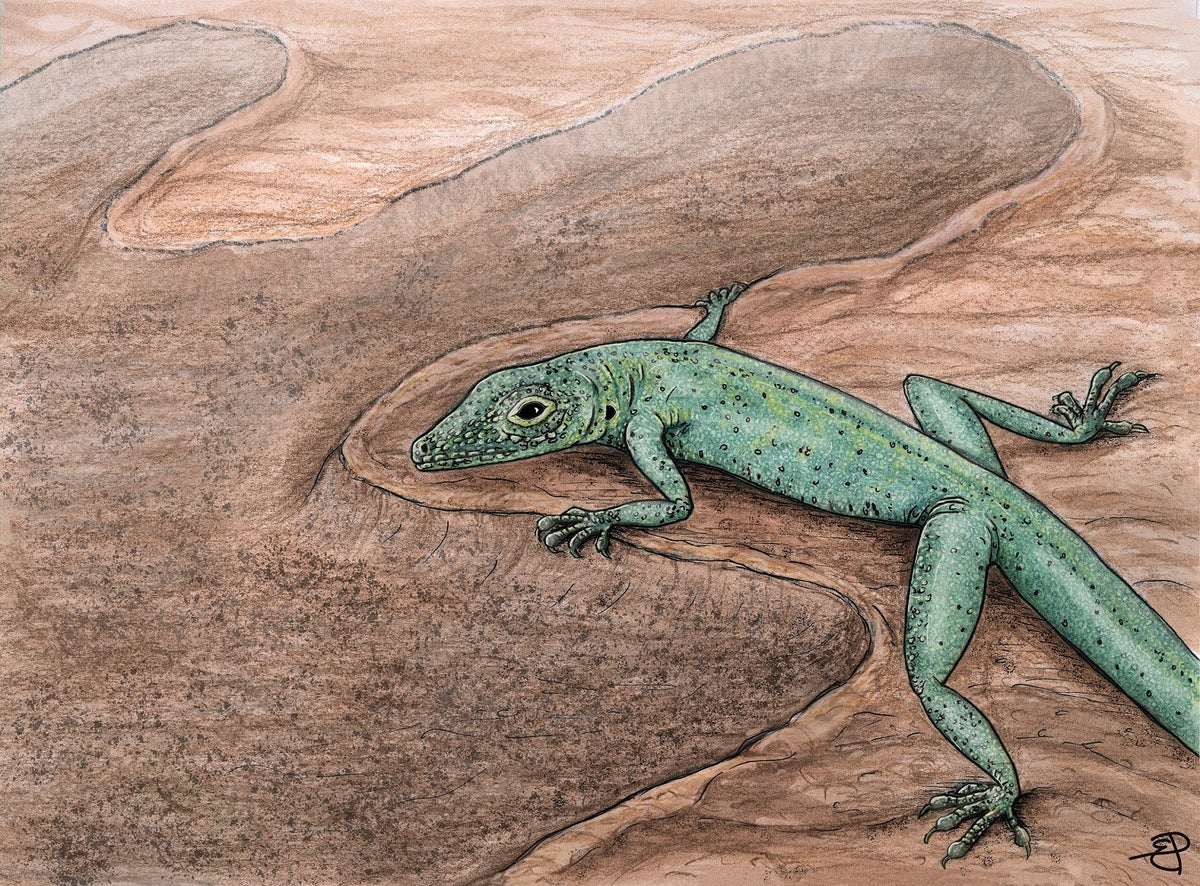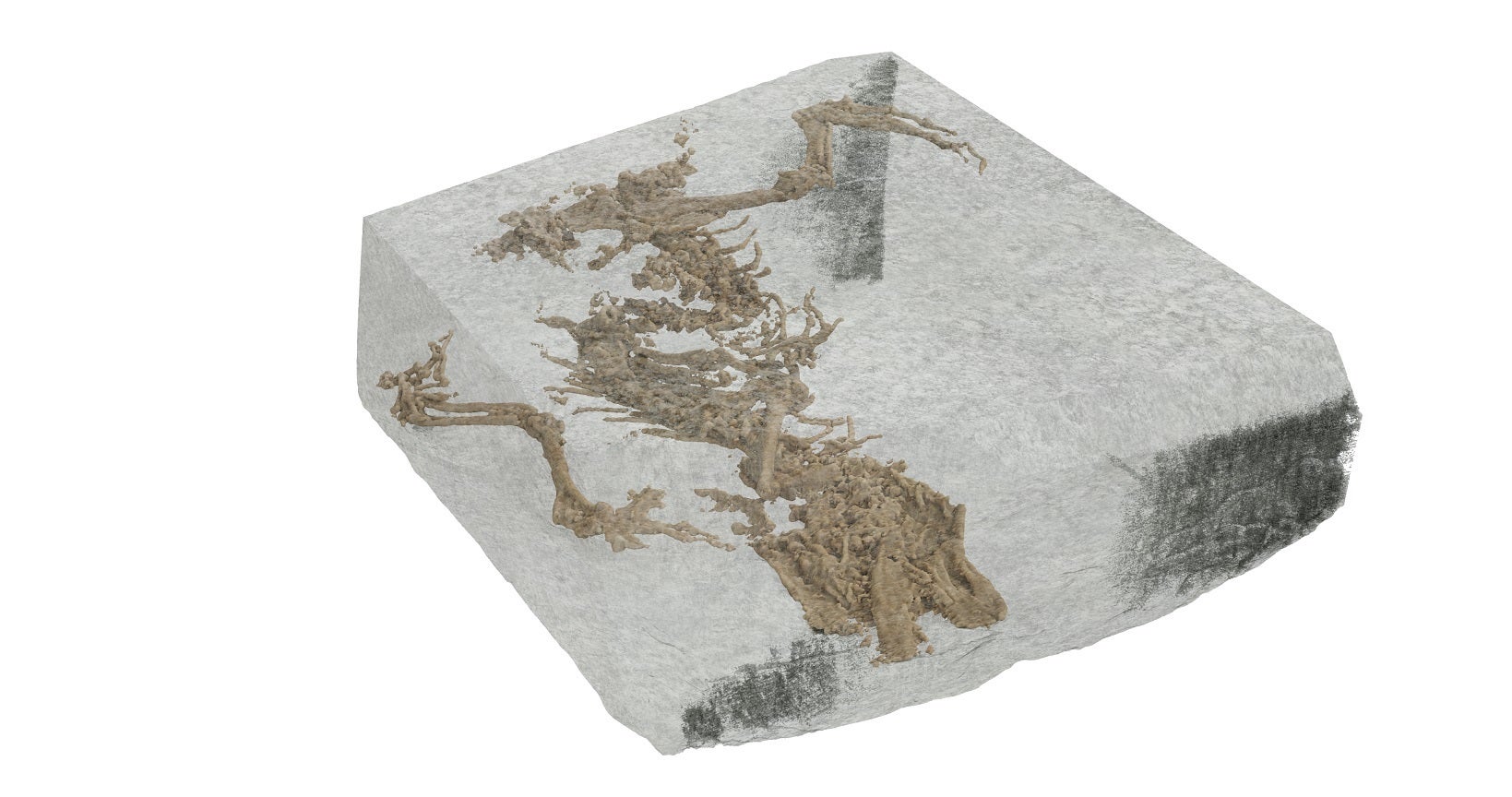
A tiny, 166-million-year-old fossil lizard unearthed in Scotland could fill gaps in scientists’ understanding of how reptiles evolved.
The 6cm long skeleton discovered on the Isle of Skye is believed to the most complete lizard fossil of its age found anywhere in the world.
The fossil, which dates to the Middle Jurassic period when dinosaurs roamed Earth, comprises of the imprint of nearly a full lizard skeleton, missing only the snout and tail.
Known as the Bellairsia Gracilis, the lizard belongs to a wider animal group known as squamate reptiles, which today include more than 10,000 species such as snakes, chameleons and geckos.
Scientists said their findings, published in the journal Nature, could help in “filling gaps in our understanding of evolution and the history of life on Earth”.
Dr Mateusz Talanda, of the University of Warsaw and University College London (UCL), who is first author on the study, said: “This little fossil lets us see evolution in action.
“In paleontology, you rarely have the opportunity to work with such complete, well-preserved fossils coming from a time about which we know so little.”
The origins of squamates are thought to lie some 240 million years ago but a lack of fossils has made their early evolution difficult to trace.
To get a more complete picture of Bellairsia, the researchers used an imaging technique known as CT scan - usually used by medical professionals to obtain internal images of the body - to reconstruct its skeleton.
Analysis suggests Bellairsia belongs to what the researchers describe as the “stem” of the squamate family tree and split from other lizards just before the origin of modern groups.
Professor Roger Benson, of the University of Oxford, said: “Fossils like this Bellairsia specimen have huge value in filling gaps in our understanding of evolution and the history of life on Earth. It used to be almost impossible to study such tiny fossils like this, but this study shows the power of new techniques including CT scanning to image these non-destructively and in great detail.”

The fossil was found in 2016 by a team led by Oxford university and National Museums Scotland. It is part of a collection of new fossils discovered in the Isle of Skye that has helped explain the evolution of early amphibians, mammals, and other animal groups that are present day.
Dr Elsa Panciroli, who discovered the fossil, said: “The little black skull was poking out from the pale limestone, but it was so small I was lucky to spot it. Looking closer I saw the tiny teeth and realised I’d found something important, but we had no idea until later that almost the whole skeleton was in there.”
Study co-author Professor Susan Evans, of UCL, who first described and named Bellairsia from a few jaw and skull bones from Oxfordshire 25 years ago, added: “It is wonderful to have a complete specimen of this tantalising little lizard, and to see where it fits in the evolutionary tree.
“Through fossils like Bellairsia we are gaining a better understanding of early lizard anatomy.
“Angus Bellairs, the lizard embryologist after which Bellairsia was originally named, would have been delighted.”







